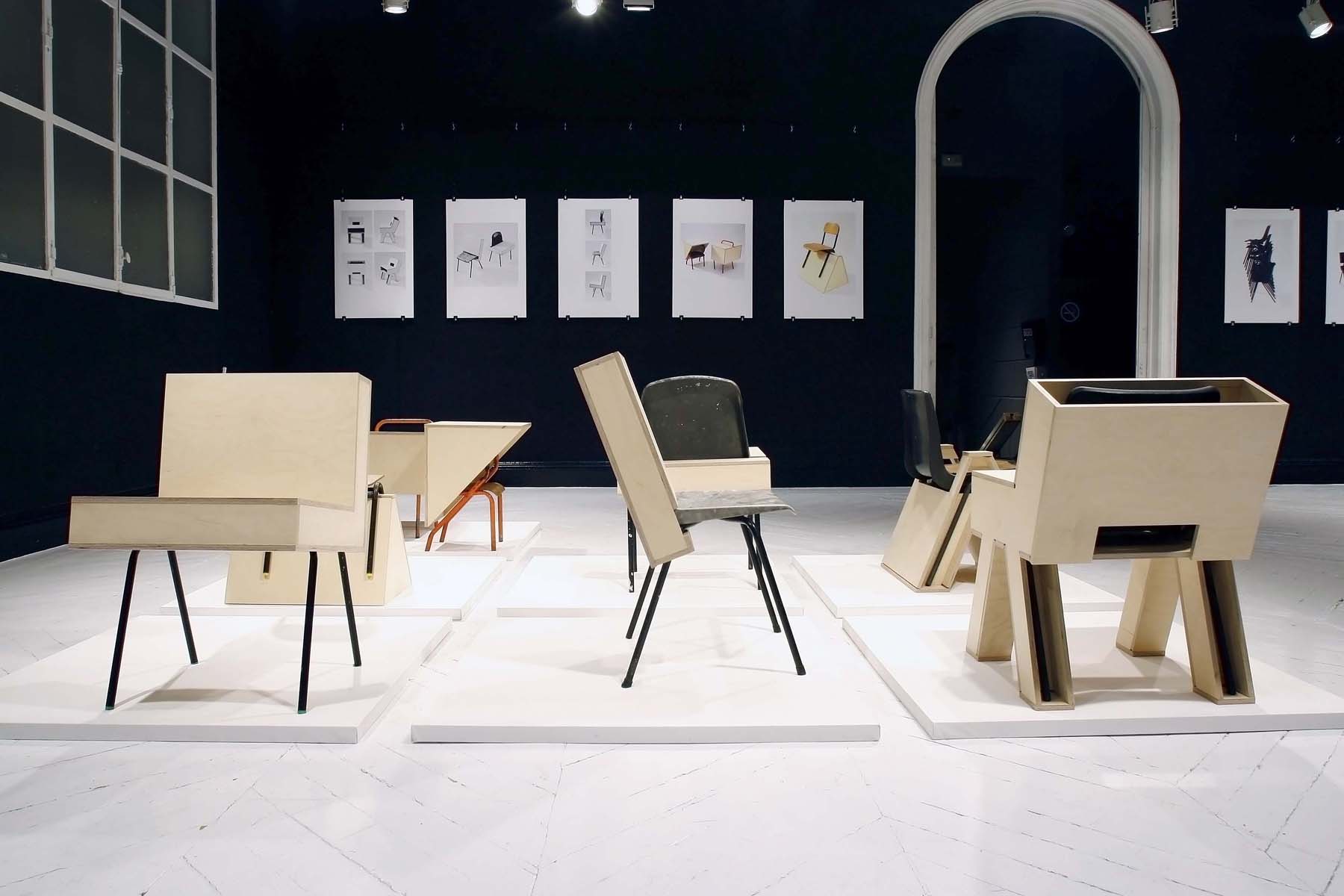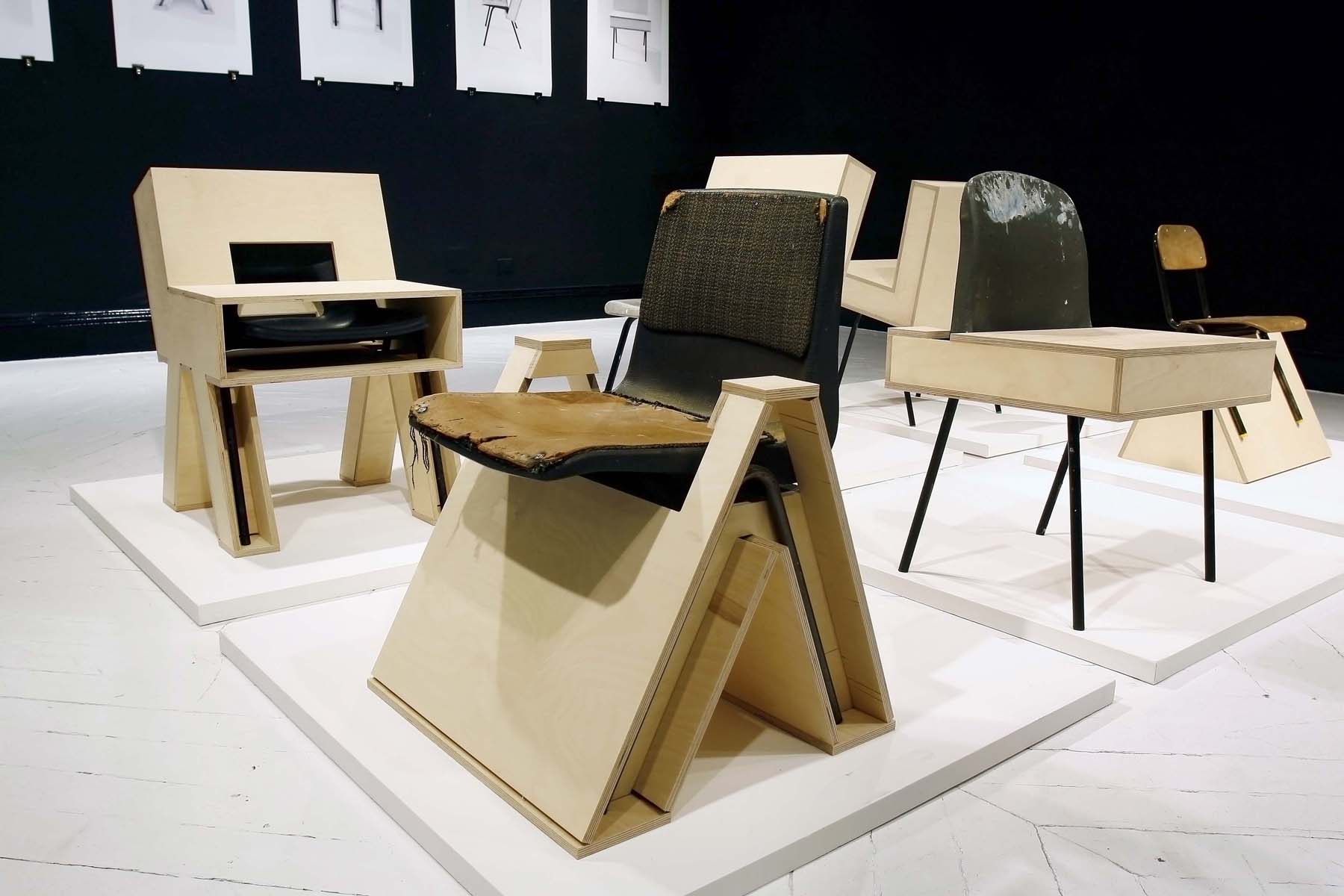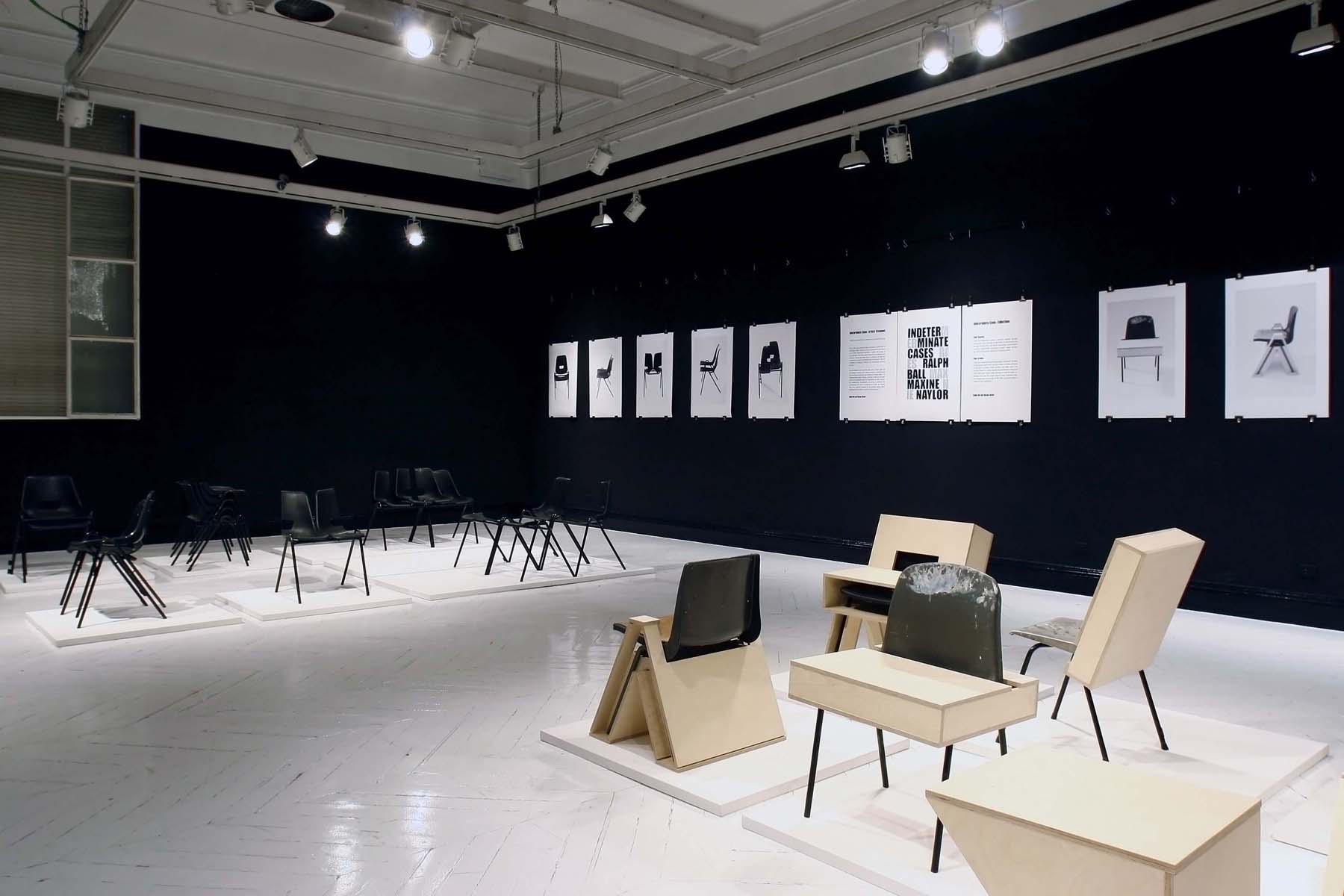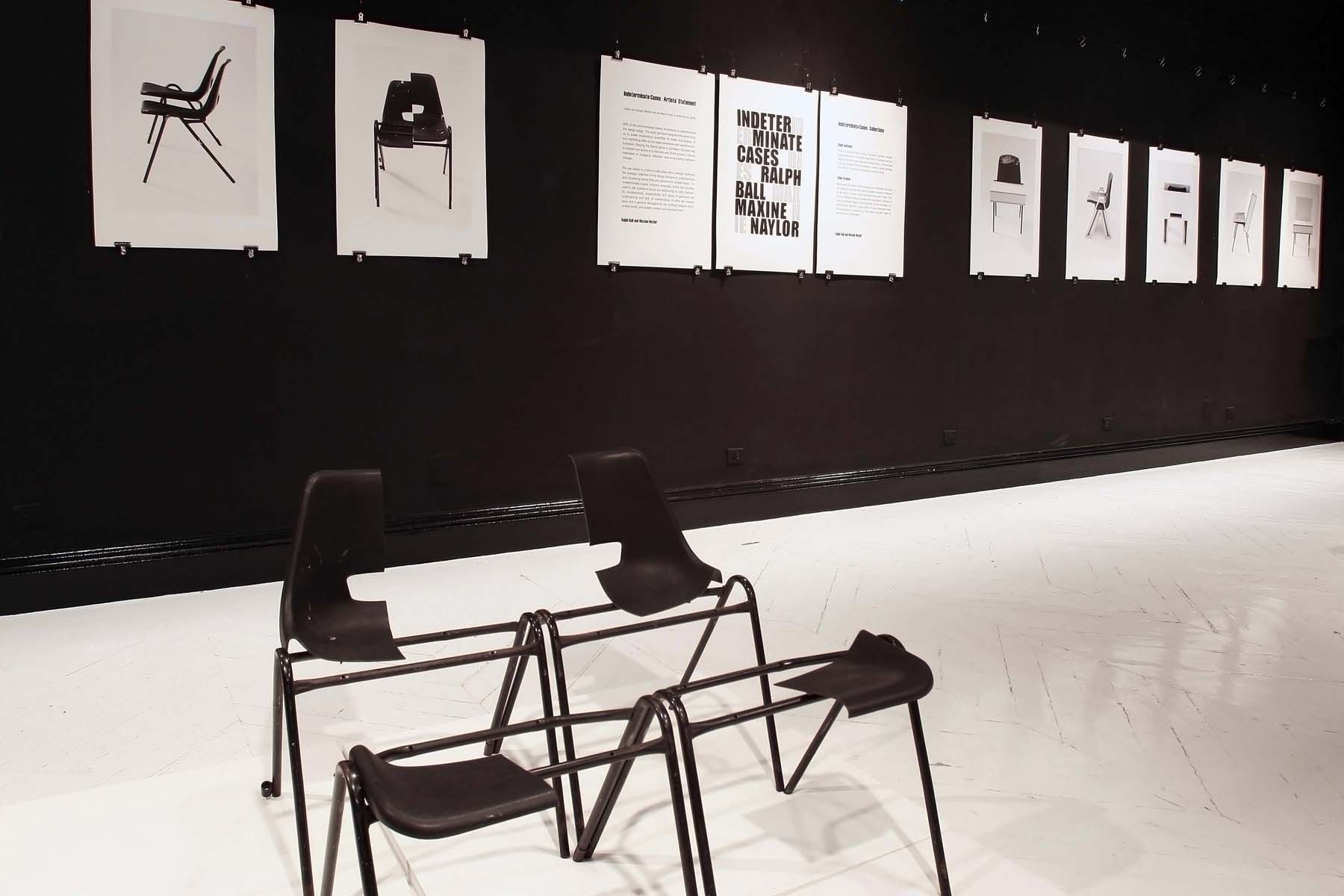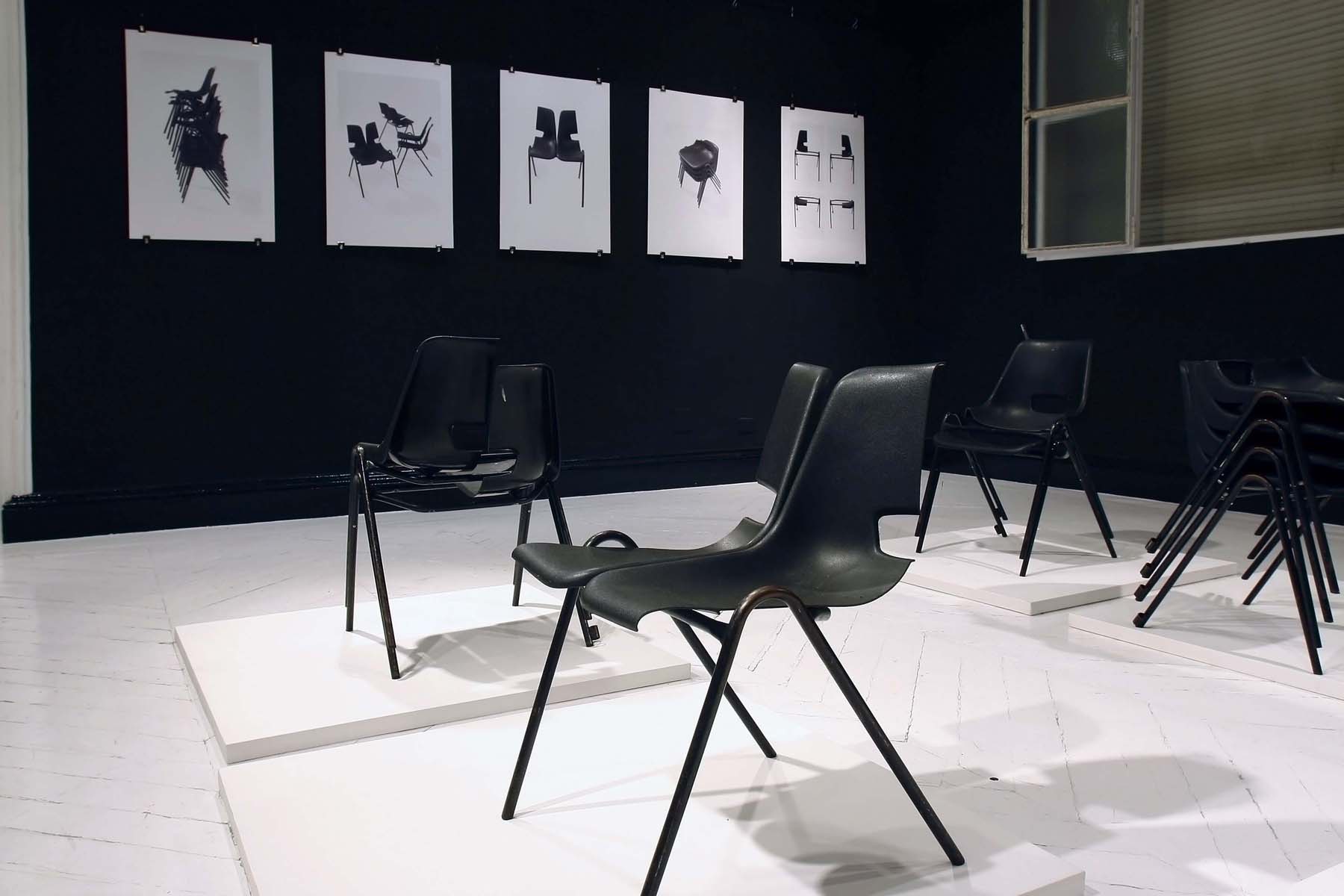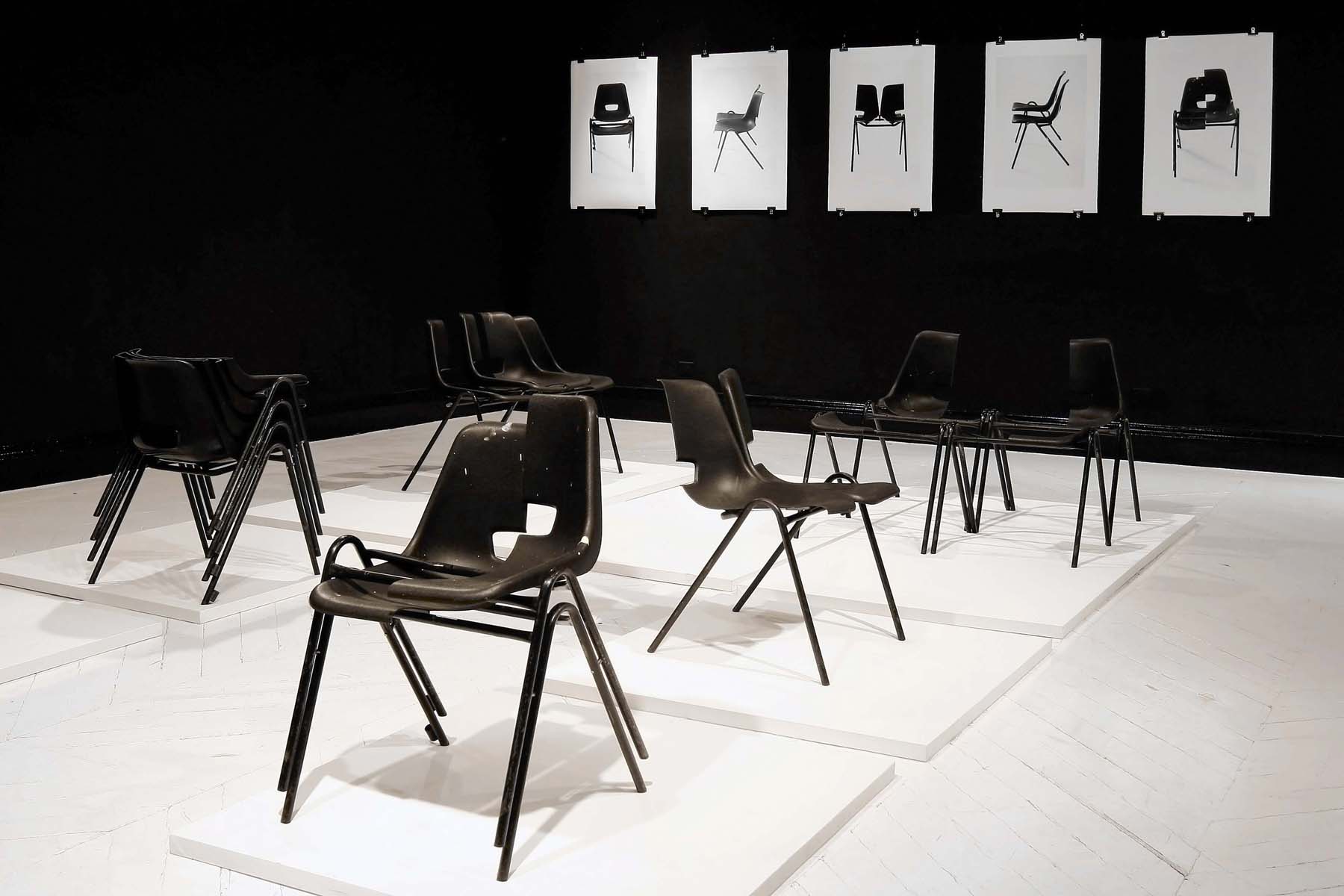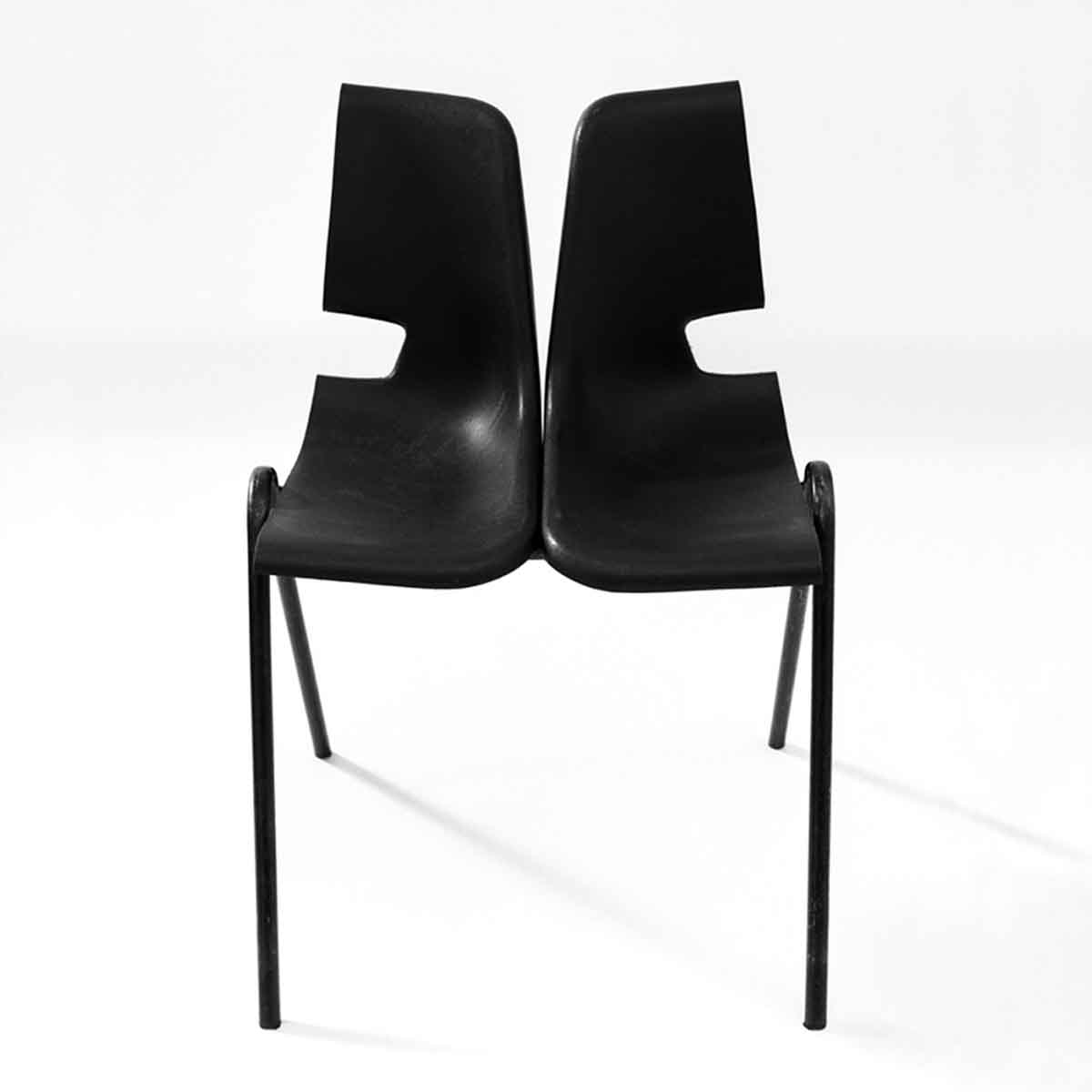
Indeterminate cases
Ralph Ball & Maxine Naylor
16/10/08. (Sala 262)
‘Indeterminate Cases’ Ralph Ball and Maxine Naylor’s latest exhibition at La Sala Vinçon, Barcelona, extends the visual vocabulary explored in their book Form Follows Idea. Ball and Naylor use design to communicate ideas about design itself and the strategic potential of the design process in understanding issues that are pertinent to society today. In ‘Indeterminate Cases’ ordinary, everyday chairs are reconfigured to ask questions about our relationship to utility, familiarity, obsolescence, sustainability and value.
The exhibition presents two new collections of their work, ‘Chair Anatomy’, a series of stacking / linking constructions & ‘Chair Archive’, a group of encased 20 century specimens, ambiguously inter-playing container and content.
In the preface to Form Follows Idea Jeremy Myerson writes ‘Not for nothing are Maxine Naylor and Ralph Ball widely regarded as among Britain’s most thoughtful furniture designers. They have been slowly and carefully generating the intellectual impetus to carry their study of the meaning of objects into the territory where design meets art. Practical philosophy could be one way to describe their approach. ….. In a world of increasingly strident contextual debate about design, in which the narrative is mainly generated and sustained by external commentators, Ball and Naylor reclaim the role for practising designers. They do this by embedding the narrative in the object itself: chairs and lights, for example, go beyond their function or even their symbolism to playfully reflect on a cultural meaning. You don’t develop this strategy overnight. Ball and Naylor have been edging this way gradually, using their fascination with the Modern Movement to question in a gentle, enigmatic but ultimately confrontational way what modern design really means.’
Ball and Naylor say of their work:
‘It is important to re-establish visual contemplation and communication: to put the brakes on unreflective proliferation and superficial replication. It is time to provide critical, ironic and playful commentary on our condition and our cultures of consumption of both material and information. It’s time to value what we have, to reject superficiality and to play seriously. It is time to put meaning and content back into design.
We are interested in finding forms of expression where structure and material resolution are taken as given and the designed object as cultural information can be contemplated. Our invention now lies more in reconnecting and building authentic, narrative layers of meaning back into objects that have lost meaningful significance, rationale and value under the shear proliferation of inferior copies. Today production belongs to everyone with a computer. Speed, quantity and the seductive power of production have become ends rather than means. Meaning has disappeared as method over-takes.’
Extract from Form Follows Idea Ball and Naylor 2005 published by Black Dog.
